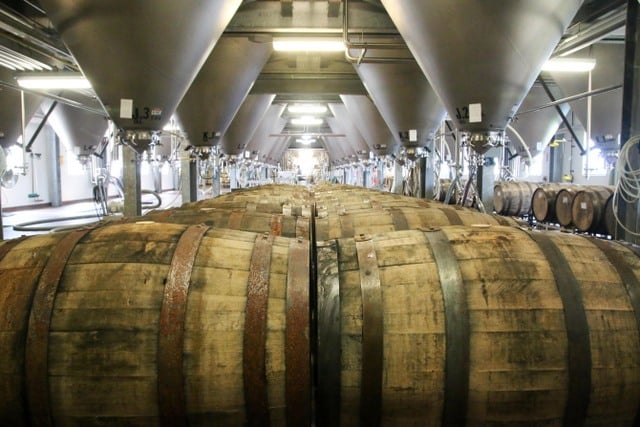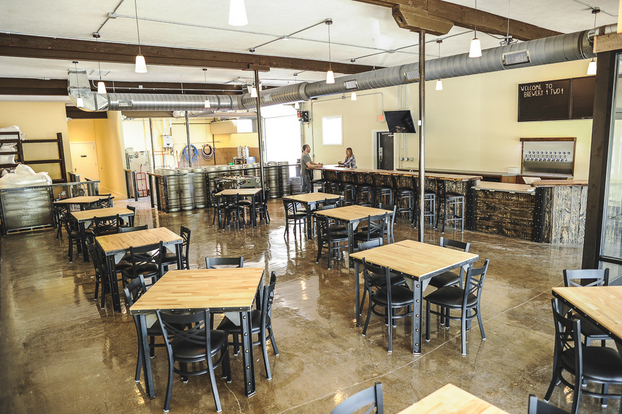
For the past 20 years, Kary Shumway has worked as a chief financial officer for a beer distributor. He understands what makes these folks tick and will guide you through the process to get your brands the attention they deserve. Attention and focus leads to more sales of your beer. Sign up for his newsletter right here (we did).
The cost of making beer includes labor, materials and overhead. The first two are easy to wrap your mind around, but overhead is tricky. Direct labor is the cost you pay people to make the beer. Salaries and benefits for brewers, cellarmen and packaging go in direct labor. Direct materials are the ingredients you combine to make the beer. Hops and malt go in direct materials. So, what exactly is overhead?
Overhead is the cost of everything else that you need to produce the beer. It includes lease expense, insurance on the brewery and depreciation expense of the equipment. Overhead costs are those indirect costs, or support costs, which keep the brewery running. Knowing what to include and what not to include in overhead costs can be confusing. In this article we’ll clear up the confusion and provide clear guidance so that you can confidently measure your brewery overhead costs.
- Overhead: Why you need it in the first place
- Expenses to include and exclude from overhead
- Frequently asked overhead questions
- And overhead best practices
Overhead: Why you need it
Simply put, the accounting people require you to calculate and record overhead. Those pesky Generally Accepted Accounting Principles (GAAP) state that overhead costs need to be used to properly value inventory and cost of goods sold.
The idea here is that when you value the inventory you include all the costs that go into making the beer: direct labor, direct materials and overhead costs. From a business perspective, there is also a reason to calculate and apply overhead costs, so that you understand the total costs to make the beer and can ensure you are pricing it properly. GAAP doesn’t always make good business sense, but in this case it does.
Expenses to include and exclude
Overhead costs don’t directly tie to the production of the beer. Therefore, overhead is also referred to as indirect cost, fixed cost or manufacturing burden. In a sense, indirect costs like lease expense are a burden on the cost to produce beer. Overhead costs include anything that is necessary to produce the beer. To put a little more detail on this, let’s list out the expenses commonly included in overhead:
- Salaries and benefits for brewers, cellarmen and packaging. This would include direct supervisors as well.
- Depreciation of brewery assets and equipment.
- Rent or lease expense for the main brewery and any offsite storage of materials or inventory.
- Building maintenance and pest control
- Property taxes
- Utilities, such as electricity, natural gas and water/sewer
- Chemicals and supplies
- Uniforms and safety gear
- Equipment rental, repairs and maintenance
- Insurance on the brewery and equipment
- Licenses and fees related to production or equipment
Sometimes it’s easier to look at what’s not included in overhead to get a better understanding of what to include. In a nutshell, costs associated with selling, general or administrative are not included in overhead. Therefore, costs for the bookkeeper, sales team and company president are not included in overhead. Unless of course, all those positions fall under the responsibility of the head brewer as well!

Overhead cost FAQs
Q: Are lab or quality control costs included in overhead?
A: Yes.
Q: When I buy new brewing equipment, do I have to include the cost of the depreciation?
A: Yes
Q: If we add a canning line, does that depreciation cost go into just can packaged products?
A: Yes
Q: How do you allocate actual labor that goes into each batch of beer?
A: There are different ways, but the simplest is to use standard costs. Use an average wage rate multiplied by the average time it takes to produce the beer.
Overhead best practices
Consistency is key. Be consistent from month to month with what costs you include in overhead. This consistency will allow you to compare like numbers from one period to the next and have confidence in the results. Conduct regular audits of your costs. It’s easy to add a new cost to the brewery (a new lab tech, for example) and forget to include this in the overhead calculation. Make a review of your actual costs at least once a year and ensure all overhead costs are properly captured.
Wrap up + action items

After direct labor and direct materials, overhead includes all the other costs necessary to make your beer. Review your brewery overhead costs — what’s included and what’s not included? Compare your overhead to the list above and see if anything is missing.
Generally Accepted Accounting Principles require that you capture overhead to properly value your beer inventory and cost of goods sold. However, there is a business benefit as well: You’ll get a better look at your true costs to produce the beer, so you can price it properly. When you price it properly, you can ensure profitability, and you thought overhead was just a burden.
Kary Shumway is the founder of Beer Business Finance, an online resource for beer industry professionals. Shumway has worked in the beer industry for more than 20 years as a Certified Public Accountant and currently as chief financial officer for Clarke Distributors Inc. in Keene, N.H. Beer Business Finance publishes a weekly beer industry finance newsletter, offers guide books on topics such as sales compensation planning, SKU management and financial literacy and produces a weekly podcast. The newsletter with a free six-month trial, industry guides and podcast are all available at www.BeerBusinessFinance.com.





Leave a Reply
You must be logged in to post a comment.